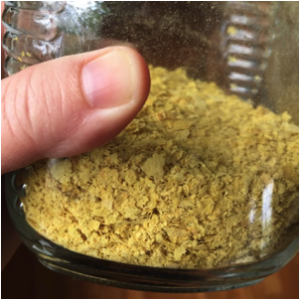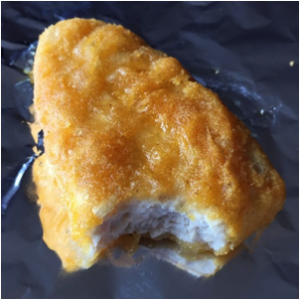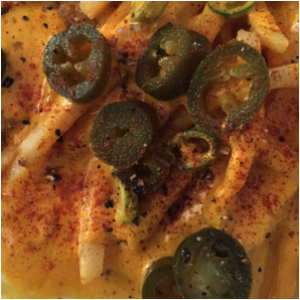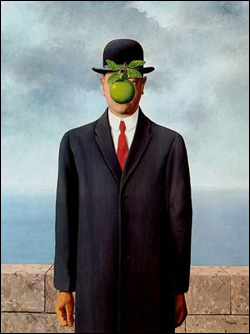Hello. I love, read, and write fantasy fiction. Oh, and I’m a vegan.
When I sell my fantasy novels at Comic Cons, I’ll usually sneak a little reference onto the bottom of my table white board, such as Vegan, or Vegan-friendly. In my mind, this covert signal will draw vegans to my table, whispering, “I am one too. Tell me, sister, about your fiction.” Like that first moment of connection in a dystopian novel. This doesn’t happen. Instead, people skip all the other great things on the board, point right to vegan, loudly state, “Look, it says veggan!” and then laugh. This hasn’t dissuaded me from the attempt. About half of those times, someone will ask, “Vegan-friendly fantasy fiction? What’s that?” They laugh. Then when I start to answer, they leave. Even more often, they point and laugh, then turn away.
In my mind, whenever someone asks what could be vegan about fantasy, it proves to me that they’ve never been a vegan reading fantasy. In addition to a lot of the violence and war in the genre (it’s usually a central component, even outside of grimdark), the best scenes feature someone riding their steed in a fine leather vest to grab a hock of ham. I’m not even sure I know what hocks are, but I have concluded they are key to the development of fantasy heroes. So, you know, my fiction is just focused a bit differently. In fact, I think that diversity and exploration is what fantasy is all about.
I’m not here to get into all of that, though. I’m here to talk about one of Cat’s and my favorite subjects: yummy food. Now, I’m not an authority on gourmet cuisine. Go to a vegan restaurant or check out many amazing online vegan chefs for that. (I’m particularly fond of Richa Hingle.) Hey, I’m not even a great cook. But I haven’t eaten meat in almost a quarter century, so I can definitely speak to “what we eat.” Don’t worry. This is just a quick blog to spark some ideas. But if you don’t mind eating plants, here are five simple foods you could give a spin.

This is a vegan staple, and yet so many people have never even heard of it. First, where to procure?
Any health food store should sell it in bulk, but even a standard grocery store should have a little plastic can of it. It’s rich in B vitamins and is often described with a nutty or cheesy taste. (It’s really a “yeasty” taste but no one wants to say that for obvious reasons.) Online vegans often say to sprinkle it on popcorn, but I find it a little dusty that way. Bloggers always show it on avocado toast, but the avocado doesn’t need it. I use it as a savory seasoning: in soups, in pasta, or even to make a quick vegan mac & cheese. Just get a bag and throw it on or in stuff. It’s good.

2. Seitan
I do love a good tofu (I am so serious about tofu), and especially love when I can find local or handmade tofu. But there’s another common plant protein which with you may not be familiar. Seitan is essentially seasoned wheat gluten (or “wheat sausage” if you will), so it’s no good if you avoid gluten or eat gluten-free. Savory and rich, I really think you can’t beat a good homemade seitan. (Despite having more than one young hipster brag to me how much they love “eating Satan.”)
There are all kinds of searchable recipes, and I’d recommend using ones that incorporate lots of rich broth””and beer. (You don’t need the beer; it’s just got a flavor that works really well in seitan.) And if you don’t want to try making it, buy a good brand like Upton’s. It won’t be as juicy from the box, but still hearty and delicious.

I guess I should clarify that I’m a real-deal vegan. Without getting into it, that means I follow a belief system (an ethic) that also influences my diet. Not just a diet. This sometimes creates clashes with various plant-based diets that focus on health or shirk away from processed or commercial products.
No one should eat all packaged products. But if I had to, it might be the Gardein filets! Very likely in your grocer’s freezer too. It’s easy. Bake a couple of filets or tenders, cook a fresh tortilla (I buy ones without lard or non-vegan dough conditioners), and make a wrap with a few greens, some hot sauce, and a swipe of vegan cream cheese or mayo. I’m thinking about it now. Sigh.

“But I’ve had cashews,” you say. “That’s just nuts.” But vegans use them as an easy source of cream or milk. You do really need a high-quality blender (e.g. Vitamix) to make this work, but if you have one, it’s very simple. It’s recommended to soak the cashews first (we soak a bunch then freeze them), but not required. You can make a quick milk just by blending cashews, water, and your preferred sweetener (or not). I use this for delicious fresh lattes, with a touch of maple syrup.
My favorite use is a quick red sauce (e.g. vodka or masala) by blending a handful of cashews, a can of tomatoes (with green chilies, even better) along with whatever vodka or spices you want. That can be poured over pasta, or used to simmer peas and tofu, or to dip that Gardein you bought, or for whatever!
5. Just grab a plant
No, seriously, I’m not trying to get out of a fifth item here, but once you think more about plants, you’ll remember something you haven’t had for a while. I mean, I can’t just name all the plants. What do I eat? Sometimes a quick stir-fry. Other times a sandwich or freshly mashed guacamole. I can make soup dozens of different ways, all delicious and inexpensive. Stock spices. Stock your favorite grains. Simmer veggies in a rich sauce. Add fennel to pasta. Slice okra. Char corn. Glaze Brussels’ sprouts. Make a slaw. Throw in herbs. Or chop hot peppers. Bake potatoes. Add some Miyoko’s cheese or butter.
I could just go on and on, because quick staples I make for lunch are flashing in front of my eyes. Veggies are great! And maybe, like my fantasy heroes, you’ll be inspired to try one this week. If you do, tag me! I’d love to see what you make.
I hope that was fun””and maybe gave you some ideas for your next meal. I know I’m hungry, and since it’s five o’clock here, I’m off to break into that vegan wine. Want to connect? You can find me and my links at edebell.com. And you can check out my upcoming epic fantasy saga Diamondsong there too!
 Author: E.D.E. Bell was born in the year of the fire dragon during a Cleveland blizzard. With an MSE in Electrical Engineering from the University of Michigan, three wonderful children, and nearly two decades in Northern Virginia and Southwest Ohio developing technical intelligence strategy, she now applies her magic to the creation of genre-bending fantasy fiction in Ferndale, Michigan, where she is proud to be part of the Detroit arts community. A passionate vegan and enthusiastic denier of gender rules, she feels strongly about issues related to human equality and animal compassion. She is the author of the Shkode trilogy and the editor of the new anthology, As Told by Things. Her latest book Escape (Diamondsong Book 1) is available for preorder now! You can follow her adventures and social media at edebell.com.
Author: E.D.E. Bell was born in the year of the fire dragon during a Cleveland blizzard. With an MSE in Electrical Engineering from the University of Michigan, three wonderful children, and nearly two decades in Northern Virginia and Southwest Ohio developing technical intelligence strategy, she now applies her magic to the creation of genre-bending fantasy fiction in Ferndale, Michigan, where she is proud to be part of the Detroit arts community. A passionate vegan and enthusiastic denier of gender rules, she feels strongly about issues related to human equality and animal compassion. She is the author of the Shkode trilogy and the editor of the new anthology, As Told by Things. Her latest book Escape (Diamondsong Book 1) is available for preorder now! You can follow her adventures and social media at edebell.com.
Enjoy this sample of Cat’s writing and want more of it on a weekly basis, along with insights into process, recipes, photos of Taco Cat, chances to ask Cat (or Taco) questions, discounts on and news of new classes, and more? Support her on Patreon.
this writing advice and want more content like it? Check out the classes Cat gives via the Rambo Academy for Wayward Writers, which offers both on-demand and live online writing classes for fantasy and science fiction writers from Cat and other authors, including Ann Leckie, Seanan McGuire, Fran Wilde and other talents! All classes include three free slots.









